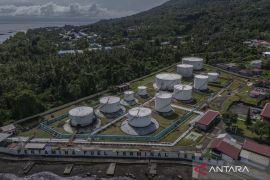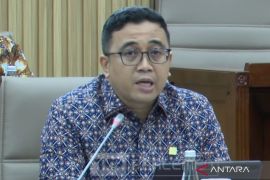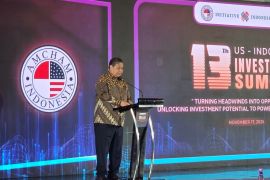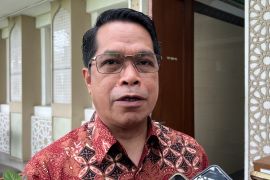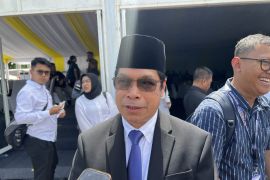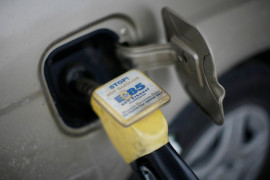"The construction of the terminal has been started, and it is scheduled for completion in two years. The terminal will cater to the LNG needs of Balis power plants," Minister of State-owned Enterprises Dahlan Iskan noted here on Thursday.
He elaborated that the construction of the LNG receiving terminal will provide a source of energy for electricity generator PT Indonesia Power Plant, which is a subsidiary of state-owned power company PT PLN.
Dahlan explained that the terminal will be developed in stages in cooperation with PT Pelindo III.
"The terminal is being built on a plot of land belonging to state-owned port operator PT Pelindo III. A floating offshore LNG terminal will be hired before the construction of the land terminal is completed," the minister stated.
The gas requirement of the Tanjung Benoa areas is estimated at 50 million metric British thermal units (MMBTU). The gas for the terminal will be supplied from Bontang (Kalimantan).
"But, it could also be supplied from the Sengkang (South Sulawesi) gas field," the minister claimed.
The terminal project is fully financed by Pertamina.
"I do not recollect the amount of investment that the project will need. There is no problem with the financing as it will be borne by Pertamina. The important thing is how to overcome the gas supply problems," Dahlan remarked.
The former PLN president director noted that the project constitutes a synergy among state-owned companies such as Pertamina, PLN, and Pelindo. It aims to reduce the use of oil fuels.
"It is a waste if we still use fuels. So, we will do our best on how we can switch to using gas. For the time being, we will first hire a terminal for a period of one year," Dahlan reported.
In the meantime, PT Pertamina has expressed its readiness to build 150 gas stations worth Rp1.5 trillion, or about US$125.5 million, in Java by 2015.
Director of Marketing and Trading Hanung Budya stated here on Wednesday that the company supported the national project to use gas in place of oil.
"We are ready to implement the project to switch from using oil to gas fuel. There is no other company that can build 150 gas stations within a year except Pertamina," he asserted.
According to him, the budget for the construction will partly come from dividends and the rest will come from the company.
"The dividend in 2013 was Rp9 trillion, or about US$752.8 million, and it can be allocated for the construction of gas stations. The consumption of gas will reduce the oil imports and subsidies besides reducing the emissions," Hanung noted.
He remarked that the oil to gas conversion could take a cue from the successfully implemented kerosene to LPG (liquefied petroleum gas) conversion project.
Some 59 million households currently consume LPG, thereby resulting in an annual savings of Rp90 trillion, or US$7.5 billion, in oil fuel subsidies.
Hanung pointed out that since the gas stations will be built at the existing oil stations, thus no additional land will be required for the project. The only investment needed will be for purchasing the equipment worth Rp10 billion, or about US$83.6 thousand per unit, or Rp1.5 trillion for 150 units.
According to him, Pertamina has five thousand oil stations, of which three thousand are located in Java.
"So, the 150 units of gas stations can be built in strategic locations," Hanung emphasized.
Especially in Jakarta, Pertamina will build 30 gas stations, or ten percent of the total 267 oil stations.
(Uu.A014/INE/KR-BSR/F001)
Editor: Priyambodo RH
Copyright © ANTARA 2014

